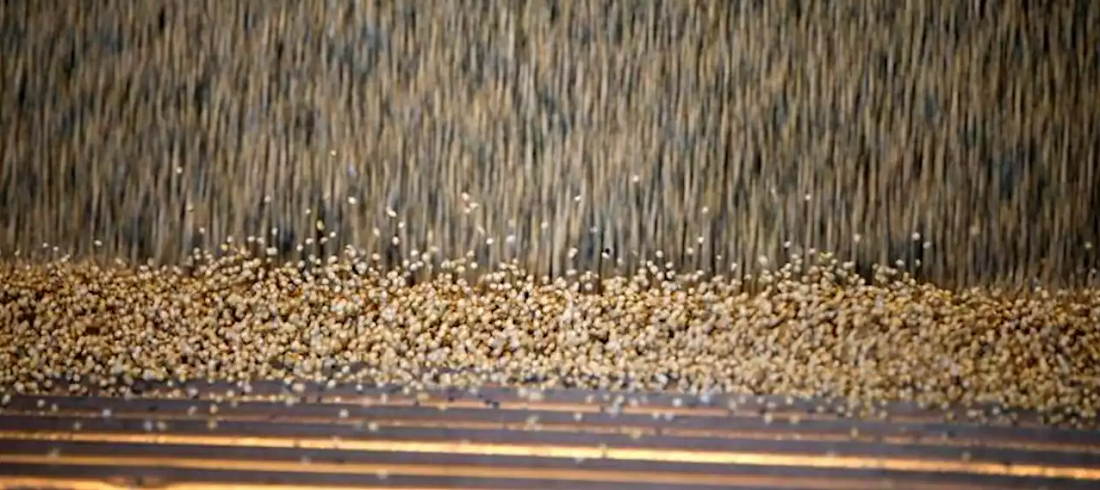
Southern Brazil reaps record soy to offset center-west crop failure
Apr, 15, 2024 Posted by Gabriel MalheirosWeek 202416
A record soybean harvest in Brazil’s southernmost state should offset losses in the drought-hit center west, keeping a lid on prices in the world’s largest producer and exporter and slowing the pace of sales, according to local farmers and cooperatives.
Rio Grande do Sul will produce 68% more soybeans this season than last, according to estimates from national crop agency Conab, which said Thursday the state would regain the post of Brazil’s No.2 producer after Mato Grosso. Another state crop agency Emater projects a record crop of 22.25 million metric tons, up 71.5% from a year ago.
That marks a dramatic comeback after two straight years of drought in southern Brazil and neighboring Argentina. In the current crop, the El Nino weather pattern has hammered soybean farmers in Brazil’s top-producing state of Mato Grosso, but compensated with strong yields in the south.
Still, the rising supplies have met with soft demand, keeping many farmers out of the market so far.
Elcio Carlot, a farmer from the region of Sarandi, said he expected his fields to yield 60 bags of soy per hectare, up from around 40 bags in the past two years. But with spot prices below 120 reais ($24) at local cooperative Cotrisal, he had only sold 500 bags of roughly 6,000 he aims to reap this season.
“I hit the eye of a fly when I sold my soy for 130 reais per bag,” he told Reuters proudly of the first batch sold. But even that was far below the highs of 142 reais per bag last year and 186 reais the year before.
Farmers in Rio Grande do Sul have only sold about 16% of their harvest so far, estimated local broker Adelson Gasparin, compared to an average 40-45% by the end of April most years.
Helvio Debona, a superintendent at Cotrisal, which works with some 11,000 farmers in the region, said the weak sales come amid above-average carryover inventories from last year.
The coop started the year using more than 40% of its 1.27-million-ton storage capacity. Debona expects to end the year at a similar level if prices don’t improve.
Cotrisal forecasts it will receive 720,000 tons of soybeans from farmers in the 2023/2024 cycle, up 30% from a year earlier. The cooperative sells 30% of its soy to local biodiesel makers and 70% to global grain traders, Debona said.
‘A GOOD PROBLEM’
Brazil will produce an estimated 146.5 million tons of soybeans this season, according to Conab, which had forecast 162 million tons in October, before the strong El Nino ravaged fields in center-west Brazil.
In Mato Grosso, where Conab forecasts a drop of 7.5 million tons in soy production this year, global grain merchants often buy directly from farmers.
But in Rio Grande do Sul they tend to deal with cooperatives set up in the late 1950s initially to help wheat producers store and sell the crop, said Enio Schroeder, vice-president at Cotrijal, the state’s largest farm coop, with more than 16,000 members.
Last year, Cotrijal received about half of the soybeans it had forecast after a drought ruined yields. Better rainfall has made the current cycle a “harvest of hope,” Schroeder said.
This season’s bumper crop means Cotrijal will receive an estimated 1.3 million tons of soybeans, up from 900,000 tons in 2023, said Cotrijal President Nei Manica. That is more than Cotrijal’s silo capacity, forcing it to negotiate storage with partners in the area.
-
Other Cargo
Jun, 02, 2021
0
Fertilizer market on the rise
-
Grains
Oct, 20, 2022
0
Brazil steals part of US soybean sales amid American harvest
-
Trade Regulations
Sep, 03, 2019
0
China charges WTO against US tariffs
-
Economy
Apr, 07, 2020
0
Brazil’s trade balance registered US$0.89 billion surplus in first week of April

